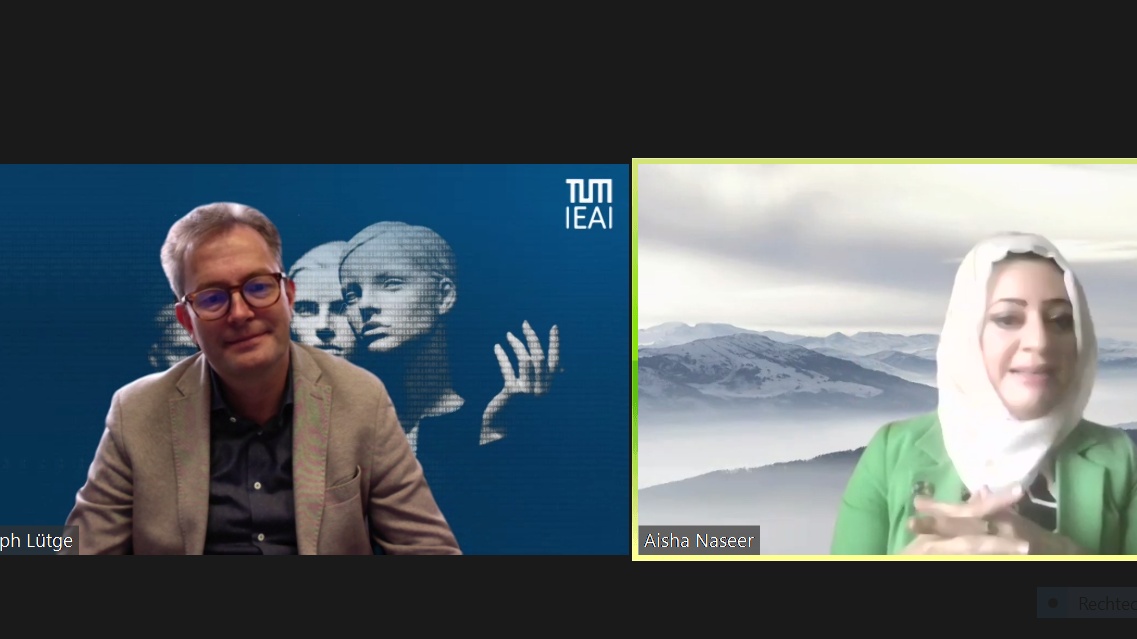On October 20th, 2022, Dr. Aisha Naseer delivered an interesting virtual presentation on “AI Ecosystem of Trusted Excellence.” The talk gave an insight into the ecosystem within the field of research and development of Artificial Intelligence, concerning research mechanisms that are run internally and how future revenue streams can be generated, a crucial concern for industry. This ecosystem also comprises geopolitical functions, regulatory actors, and opinions of the public, which shape the AI landscape. Through this discussion, Dr. Naseer explained what is required from the industry perspective and how it can be put into practice from a research perspective.
Two spheres comprise the ecosystem of trusted excellence as presented by the European Commission. First, there is the “Ecosystem of Trust,” which is a crucial quality in measuring the capabilities of the practical usefulness of AI. This includes harmonized standards and frameworks recognized by ESO (European Standardization Organizations liked CEN, CENELEC, or ETSI) following the request of the European Commission. Then there is the “Ecosystem of Excellence,” which focuses on running experimentation facilities to test the most efficient way to develop innovative AI systems while complying with the requirements of AI regulation. An example of this is seen in the AI regulatory sandbox exercise. A due date for the delivery of the Harmonized Standards by the ESO has been set for October 2024. Since this effort comprises the collaboration of various stakeholders, it is essential to understand how these actors interpolate and how this ecology is set up to strike the right balance between individualism and socialism. Dr. Naseer stressed the importance for the industry sector to focus on the various interpolation of actors within the AI ecosystem so that initial research is adequate to address the system’s needs.
Much of the discussion focused on “AI regulatory sandboxes”, which create a controlled environment to test innovative technologies within a limited time based on a testing plan agreed upon with the National Competent Authorities (NCA). The AI Act supports AI regulatory sandboxes, as it is one way to reduce regulatory burden. They have grown in popularity as they offer optimal solutions for Governments that want to design regulations, but do not have enough capacity from different stakeholders. NCAs from various countries within the European Union are encouraged to establish these systems to accelerate the development of AI systems before they are released to the public. This aids in transparently testing new technologies, contributes to evidence-based lawmaking, adds flexibility in terms of regulatory burden, and accommodates products or services that do not easily fit into the traditional regulatory framework. Nevertheless, Dr. Naseer indicates that it is important to remember that the crucial design phase could raise concerns regarding proper methodological assessment. Furthermore, it may not represent the possible impact on the larger part of society when applied to a small sample.
The first AI Sandbox was launched on June 27th, 2022, by the European Commission and the Spanish government. In the following months, they worked on setting up a legal framework before broadcasting an open call for participation in the AI sandbox and providing high-risk applications and testing tools in October and November of 2022. This AI Sandbox initially focuses on high-risk applications given that AI regulations focus on the life-critical or society-critical implementations of AI. This method enforces smart regulations without inhibiting innovation. In turn, the AI Act can be shaped accordingly to the regulatory assessment being conducted in the sandbox. The role of the sandbox is complementary to standardization, and various other tools that introduce innovation to the market, thus helping stakeholders understand the requirements of the EU regulations.
Dr. Naseer closed her presentation by identifying the various perspectives to consider when observing the AI Ecosystem from an Industrial Research perspective with Trusted Excellence: harmonization of standards, policy and regulation, testing and evaluation, and finally, trusted outcomes. This research and development then translate into revenue business streams. We want to thanks Dr. Naseer for her insights and taking the time to have this interesting conversation with our participants.

